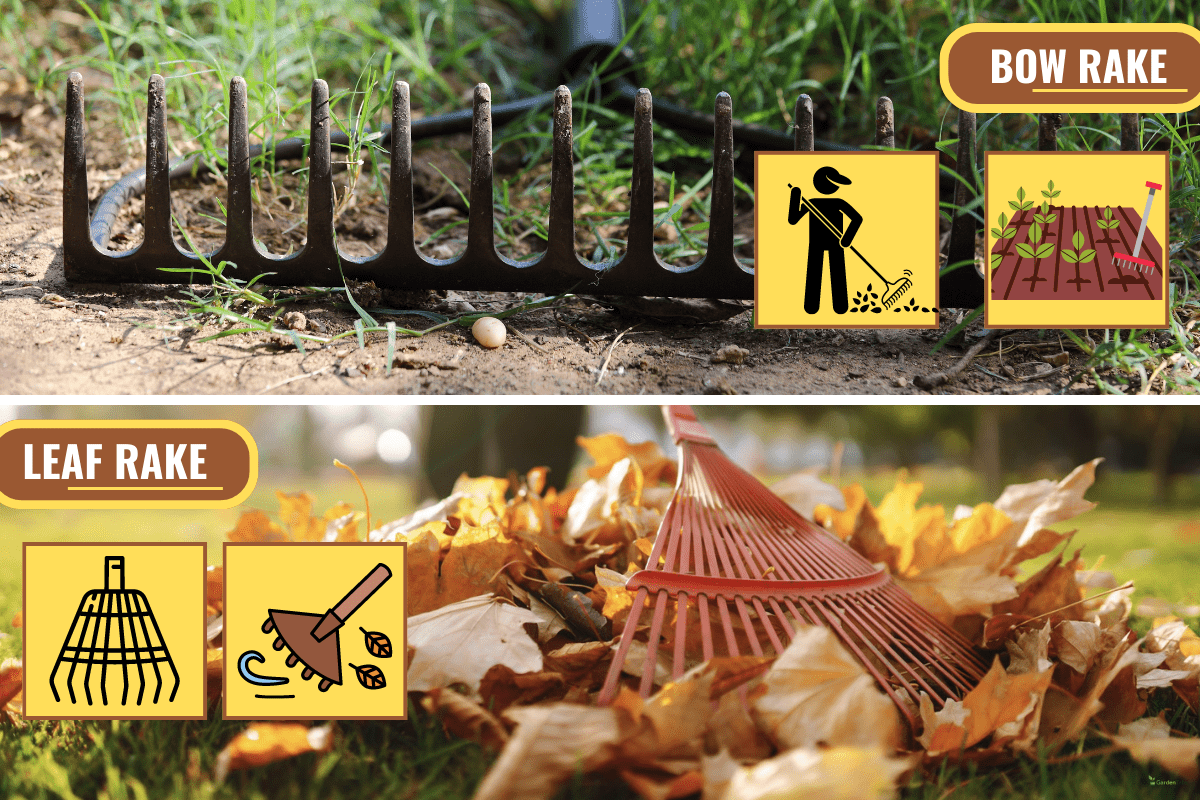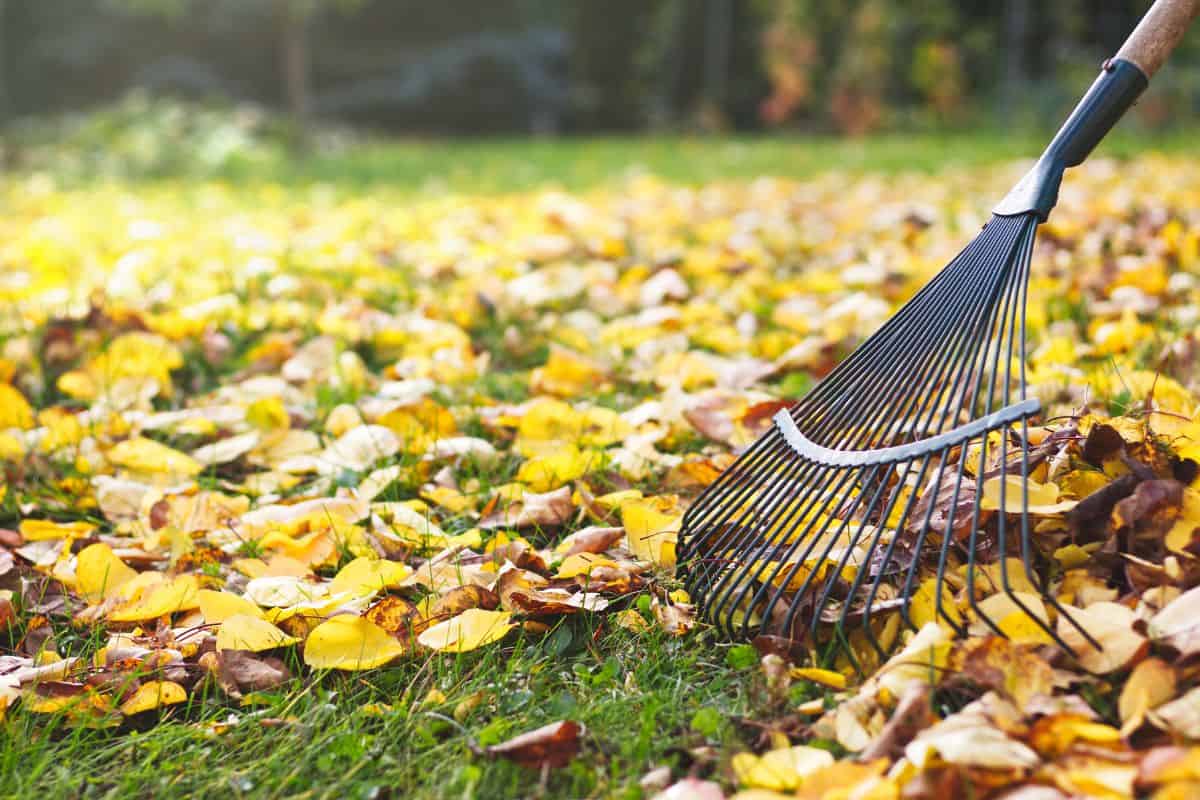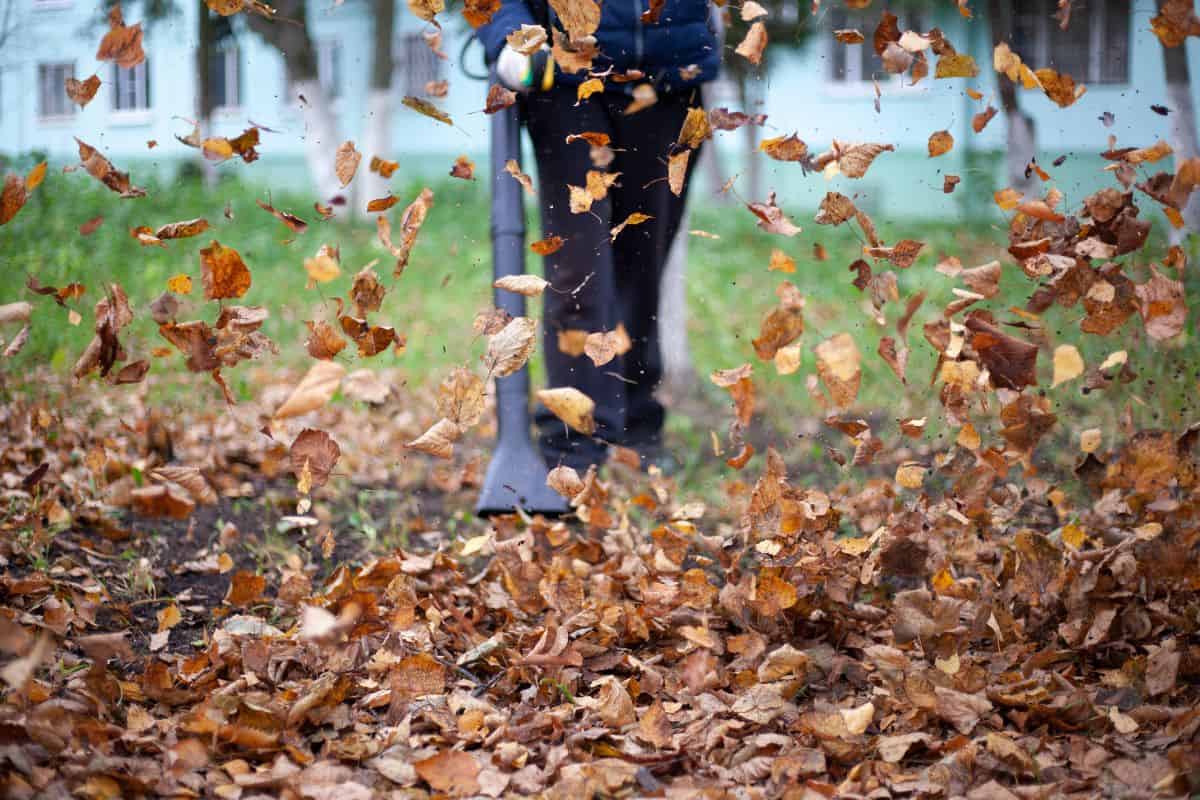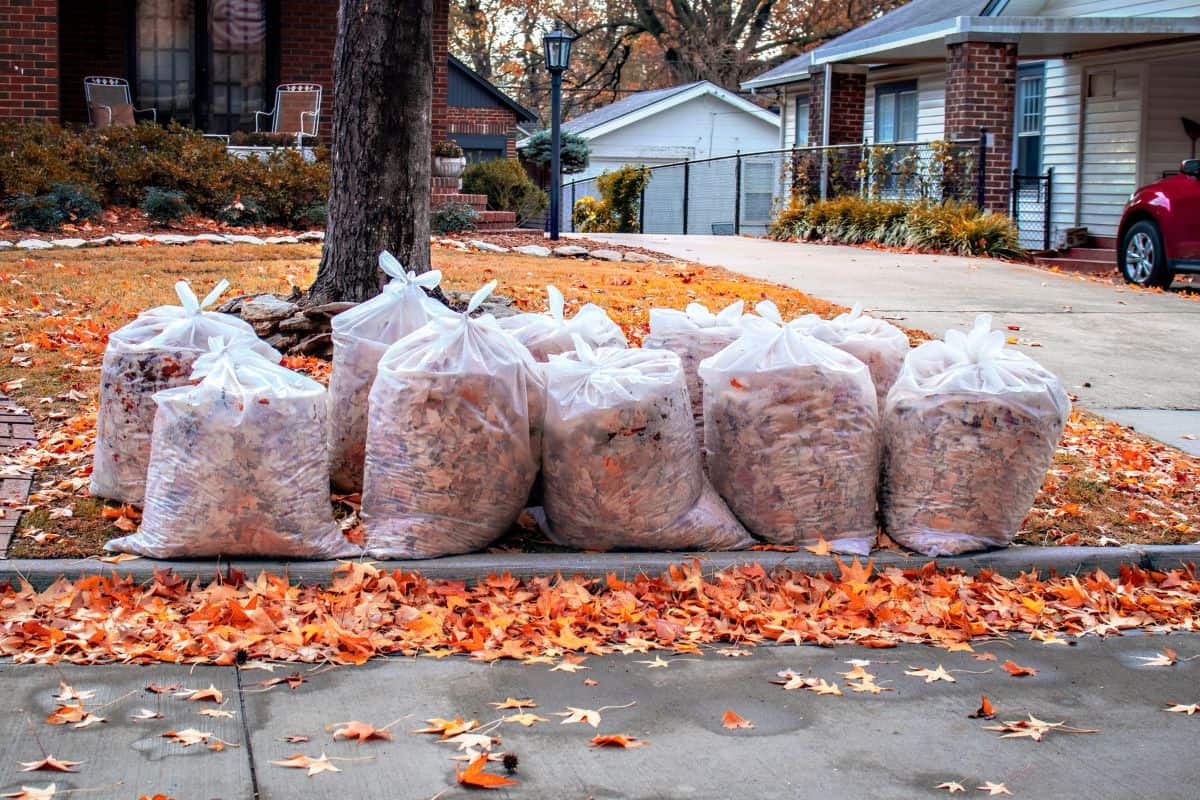Are you trying to decide whether a bow rake or a leaf rake will best suit your lawn or landscaping needs? We researched and compiled their pros, cons, and differences to help you find what you need!
A bow rake is sturdy, tough, and suitable for heavy-duty gardening, such as dethatching, breaking up soil or gravel, and cement work. In contrast, a leaf rake is made of a lighter material and is best for raking leaves and dead weeds.
While you can purchase both rakes, choosing the one that best meets your needs is better. A leaf rake may break if misused, and you may find a bow rake too challenging if you're not using it for its primary purpose. Please keep reading to learn more about their pros, cons, and differences!

Comparing A Bow Rake And A Leaf Rake
Whether you're just beginning to create your garden or trying to find the right lawn equipment, it's best to know which tools you require for your needs.
Generally, a rake is helpful for clearing turf, sweeping leaves, and other tasks.
Bow Rake
A bow rake design is not for aesthetics only; it serves a purpose.
Bow rakes are usually made of metal and have tines positioned at a 90-degree angle for heavy-duty projects; the tines are shorter (about three inches) and sharper than your regular rake.
Bow rakes are great for picking up debris and grooming soil, mulch, gravel, and compost. The tines work well in separating soil to prepare garden beds and leveling out concrete.
The smooth side of a bow rake is suitable for smoothing or leveling out materials, which is also why it's known as a level head rake.
Pros Of Using A Bow Rake
Among the many advantages of using a bow rake is dethatching. Dethatching removes thatch that prevents air and water circulation in the grass.
The tines are suitably spaced to remove the thatch without removing the grass—something you can't do with a leaf rake.
Read this post, "Should You Dethatch Or Aerate A Lawn First?" to learn more about dethatching.

You can also prep your garden beds using a bow rake; it removes pieces of stones and breaks up compacted soil clods.
Additionally, you can use a bow rake in cement work. The tines can mix wet concrete and remove any air bubbles trapped inside.
You can reach for the bow rake if you plan to cover your soil in a grass bed by raking in grass seeds.
This post may also help you: How To Rake In Grass Seed? [Step By Step Guide].
Cons Of Using A Bow Rake
While a bow rake is great for lawn and landscaping projects, it's not suitable for use as a leaf rake. Its sharpness and sturdiness can damage your grass.
Since a bow rake is generally fit for heavy-duty work, it's prone to breakage. So it is best to invest in a high-quality bow rake that can last for many years.
Check out this bow rake on Amazon.
Leaf Rake
As the name suggests, a leaf rake is commonly used to sweep dead leaves and grass. Because of that, leaf rakes are also called lawn rakes.
Leaf rakes are shaped like a fan and made from light material, either thin steel, plastic, or bamboo. The springy, flat tines are great for gliding over grass without damaging the turf.
Its shape and form make it an ideal tool for a simple clean-up in the yard. It doesn't take much effort to rake out dead leaves with this rake.
While steel leaf rakes are sturdy, plastic ones do better at raking leaves, especially wet grass. Leaf rakes made from bamboo may easily break but are gentler on the grass.

Pros Of Using A Leaf Rake
Using a leaf rake in the garden for cleaning is better than using a bow rake. It works as easily as a broom, and you can easily accomplish a lot with it.
If you aren't looking for a heavy-duty tool and want something to rake up dead leaves, then a leaf rake is for you.
Check out this metal leaf rake on Amazon.
Cons Of Using A Leaf Rake
Unlike a bow rake, a leaf rake isn't ideal for dethatching turf. Its lightweight, thin, springy tines aren't enough to dig through the soil and get the thatch stuck in the grass.
Which Do You Need: A Bow Rake Or A Leaf Rake?
Now that you know the main differences between a bow and a leaf rake, you must consider which one best meets your gardening needs.
Getting both rakes is okay because their function differs in many ways. But if you're looking for the right rake, consider your needs. Look around your yard. Is it filled with trees and bushes? Or is your lawn covered with grass?
If it's the former, you should consider getting a leaf rake because you'll have to deal with dried leaves all over your yard or driveway.
But if it's the latter, you will need a bow rake because a grass-covered lawn is prone to thatch build-up that needs fixing.
A bow rake is also recommended if you're doing a concrete DIY project at home because their robust build can work around cement materials.
Frequently Asked Questions
We've compiled a list of frequently asked questions that you may have and their answers to help you maintain your lawn.
Is It Okay To Mow Leaves Instead Of Raking?
Raking isn't necessary if you can mow over leaves. You can use a grass catcher to gather the leaves while mowing them for a neater outcome.
What Happens If You Don't Rake Leaves?

Raking is an essential part of maintaining your yard or garden.
When leaves pile up on top of the grass, it will be impossible for air and water to get through to your lawn. Over time, the grass will become less healthy.
Furthermore, your lawn will also be prone to flooding and pest growth.
What's The Easiest Way To Rake Leaves?
Here's a simple guide to help you rake leaves easily:
- Let the leaves finish falling
- Use the right rake
- Don't rake leaves after a rainy day
- Rake leaves following a grid pattern
- Bag the dead leaves right away to keep them from blowing away
How Often Should You Rake Leaves?
The lawn size and the number of trees in your yard will determine the raking frequency. A good rule of thumb is three to four times a week or at least once every week.
But it is better to rake multiple times a week to avoid having a massive pile of leaves at the end of the week.
Should You Mulch Or Bag Leaves?

After bagging the leaves, you're probably thinking about what to do to them.
You don't have to throw them away because mulching is a great way to keep your plants healthy. Most tree leaves contain 2% nitrogen, which is highly nutritious for plants.
By mulching leaves, you will have free fertilizer for your plants.
To Finish It All Up
Rakes are handy tools in the garden, and with all the many options, you need to know which ones you need.
A bow rake helps keep your grass healthy and free of thatch. Leaf rakes are handy tools that quickly get rid of dead leaves.
Both are great for keeping your yard and plants healthy. We hope you learned something new from this post!


